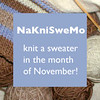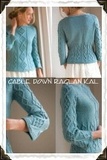FO - Spring Twists Socks
This afternoon I finished my Spring Twists socks.

I'm more than a little charmed.

Pattern: Spring Twists (Ravelry link) by Jeanie Townsend, through the Townsend Socks KnitAlong Group on Yahoo
Size: lady's size 9 with 9-inch foot circumference and 9.5-inch foot length
Yarn: Jaeger Siena 4-ply fingering weight, color 431 Sage, 100% mercerized cotton; I used two 50-gram balls and 26 grams of a third, totaling approximately 126 grams/4.4 oz or 386 yards/353 meters.
Needles: Knit Picks 6" nickel-plated double-pointed needles, set of 5 size 2 (2.75 mm)
Modifications: Worked toe-up, with short row heel
Started: April 3, 2008*
Finished: May 23, 2008
* - I actually started these with a different yarn on bamboo needles, then restarted on metal needles on April 24th, then a third time with the current yarn and needle configuration on April 25th.

Confession: In my haste to catch the afternoon sunlight, I may not have woven in my ends. These will look a lot neater at the top once I've done so.

I'm really glad I decided to switch yarns. My original yarn, while delectable and beautiful, just wasn't holding the stitches strongly enough to make it worthwhile. While they may look complex, these socks are essentially 1x2 ribbing, with 4-stitch cables every fourth row.

This was my first time cabling in socks, and I must admit, it wasn't exactly love at first twist. It involved a lot of grumbling, dropped needles, and expletives.
You start with four stitches in a row on the left needle, which we'll call ABCD, with A and D being knit stitches and B and C purls. You manuever them in such a way that once they've been worked, they "read" DBCA on the right-hand needle.

The instructions for the twist involved slipping them onto a cable needle, then moving them back one at a time to be worked. I found the cables became infinitely more bearable once I started rearranging the stitches on a DPN all at once, then purling and knitting straight across. It achieved the same result, but faster and a lot more easily, which made me much happier.
My boyfriend Eric helped me make this video to demonstrate what I'm describing:
(The song is an Aphex Twin remix of Nav Katze "Change.")
Yes, I really do knit that slowly. I got a little clumsy while transferring the purl stitches, but I hope you can get the gist of it.
Here, you move the first three stitches to the DPN, knit the last stitch (A), transfer the first knit stitch (D) from one end of the DPN, spin it around, and transfer stitches C and B from the other end. Then you purl B, C, and knit D. I have to say, I really enjoyed the propeller-like twirling of my DPN in the back of the stitches.

This yarn is not generally used for socks, rather for fine-gauge summer garments and accessories. It is highly inelastic and hurt my hands if I did too many cables or pulled too tightly. When knit at a tight, sock-appropriate gauge, the yarn is thick and durable, while still nice to use.
The comfort of the finished socks is out of this world. They breathe fantastically and feel wonderful on my feet. These socks do have a slight tendency to slouch if you dance around in them (as I was doing), but I think that could be controlled by choice of pattern and cuff length. I would say this is a gamble that paid off, and I'm glad for that as I have three other colors of this yarn in my stash, all intended for socks.

Cotton socks seem to be thicker than their wool counterparts, and I imagine the same qualities which give great stitch and cable definition also make them firmer and denser than a stretchier fiber.

The pattern as written is clear and easy to understand. I modified it to work these socks toe-up with a figure-8 cast-on, increased to 64 stitches around. I carried the pattern up the foot, turned upside-down, such that I worked three rows of ribbing, then a twist row.

I used a short-row heel from my standard formula. In this case, my heels were worked over 32 stitches, and I worked the short rows until I had 10 stitches on each side and 12 in the middle. Because I started my heel at a logical break in the pattern (just after the fourth twist on the second double-twist motif), it was easy to resume the ribbing and twists straight out of the heel.

I was pleasantly surprised by the lozenges that formed between the twists when I stretched the sock over my foot for the first time. When I was selecting this sock for the Sock Knitters Anonymous Sockdown, I didn't have a lot of finished socks for comparison, and there were none that showed the sock on the feet. I think I would have been disappointed if they came out the way I was expecting, as I seriously love the organic movement of these swooping curves which travel into twists.

I would recommend this pattern for patient, somewhat experienced sock knitters. There is nothing particularly difficult about it, but the amount of the socks which are purled, combined with the possible complexities of cabling, make it slightly more difficult than your average stockinette-based sock.
As for me, I am onto something simpler, I think, for my next project...
Previous Entries on this Project:
- Switcheroo
- More Socks on the Needles













4 Comments:
Girl your socks are GORGEOUS!
They are gorgeous!!
They are gorgeous. I will have to think about making that pattern.
Thank you ladies! :-)
Post a Comment
Subscribe to Post Comments [Atom]
<< Home